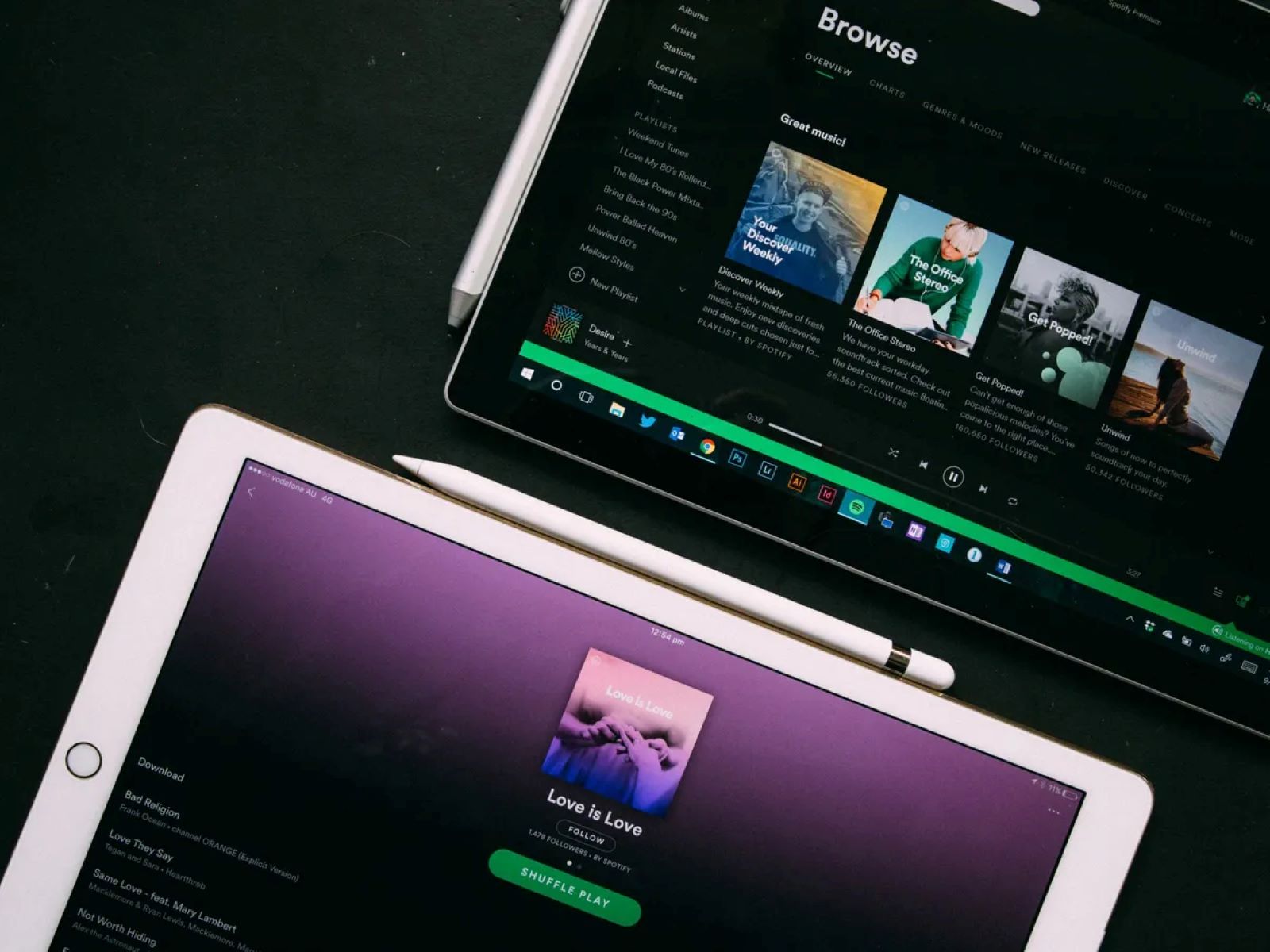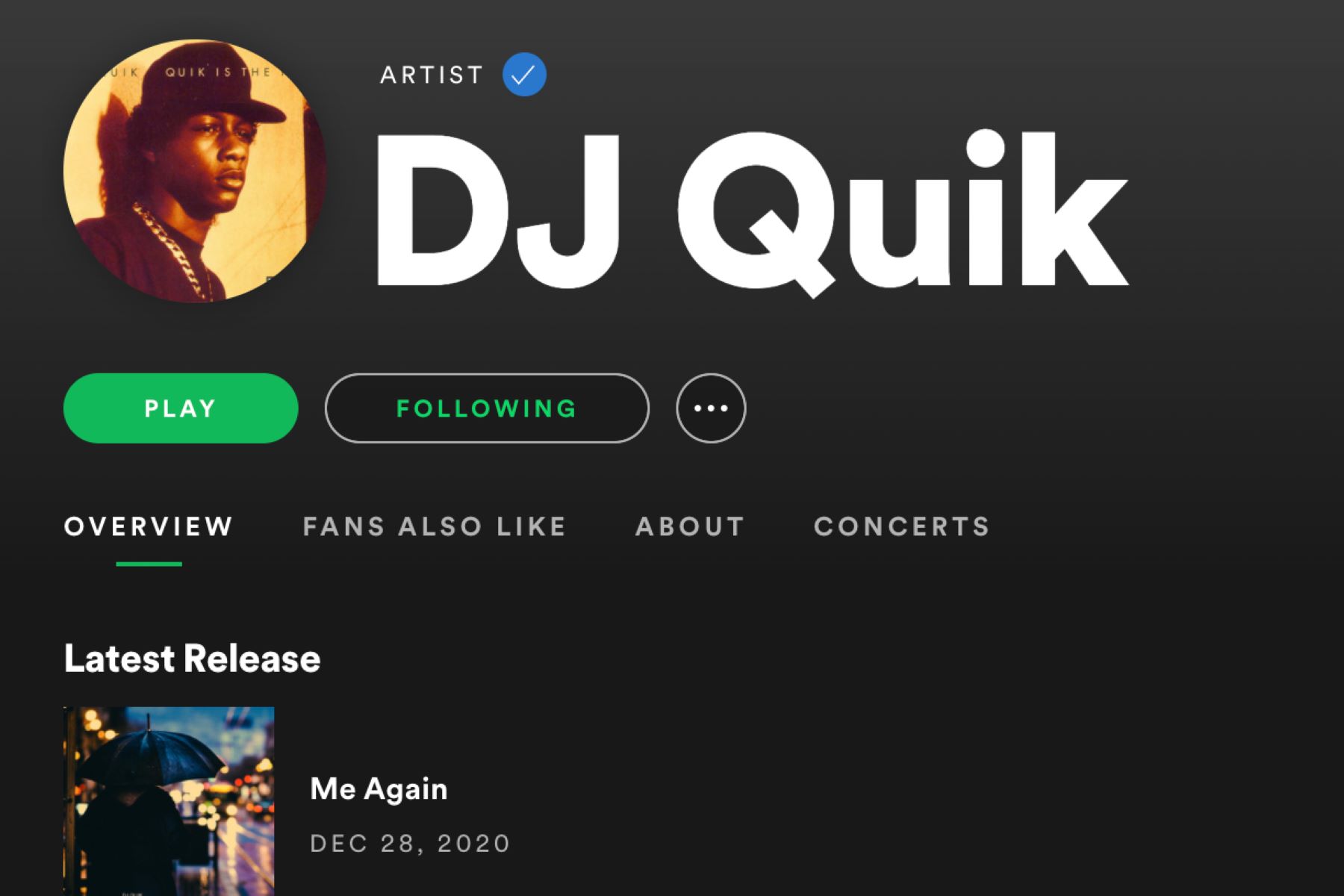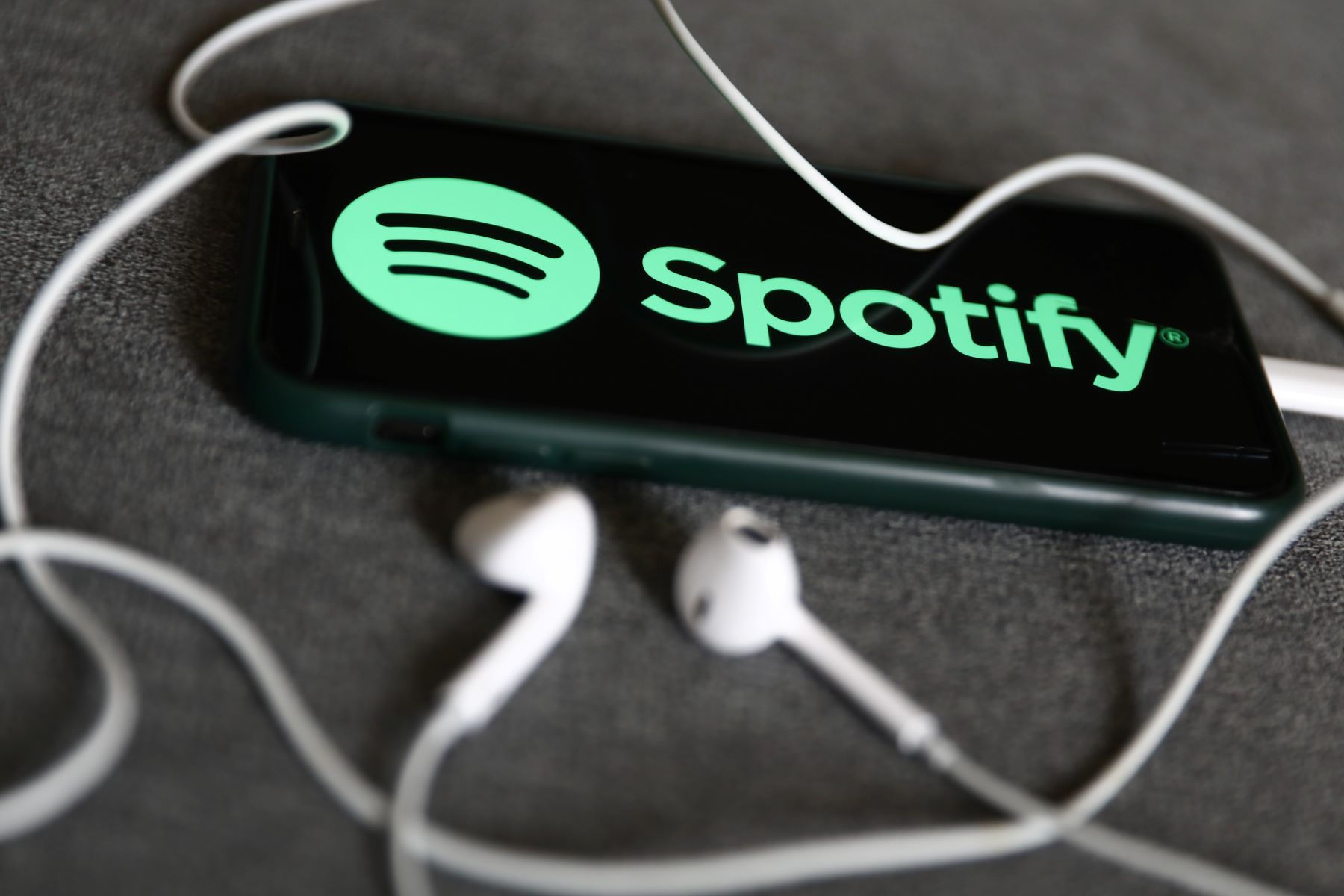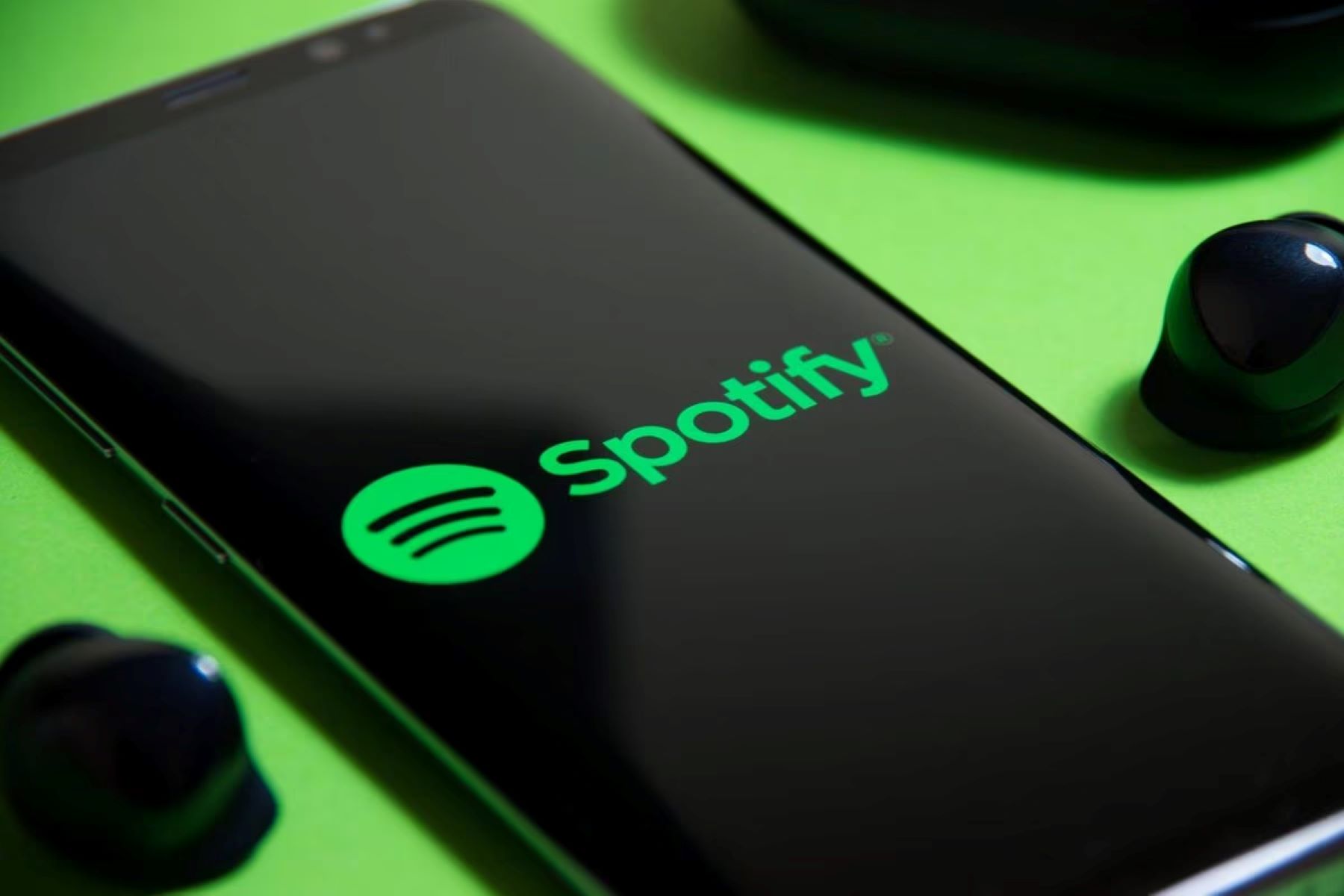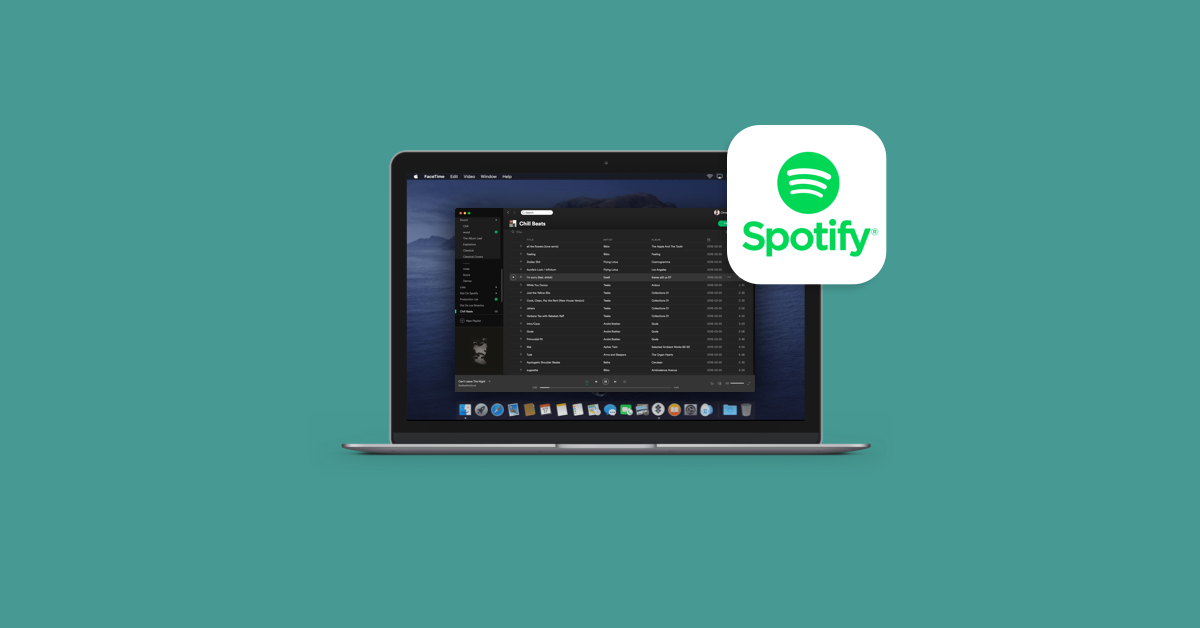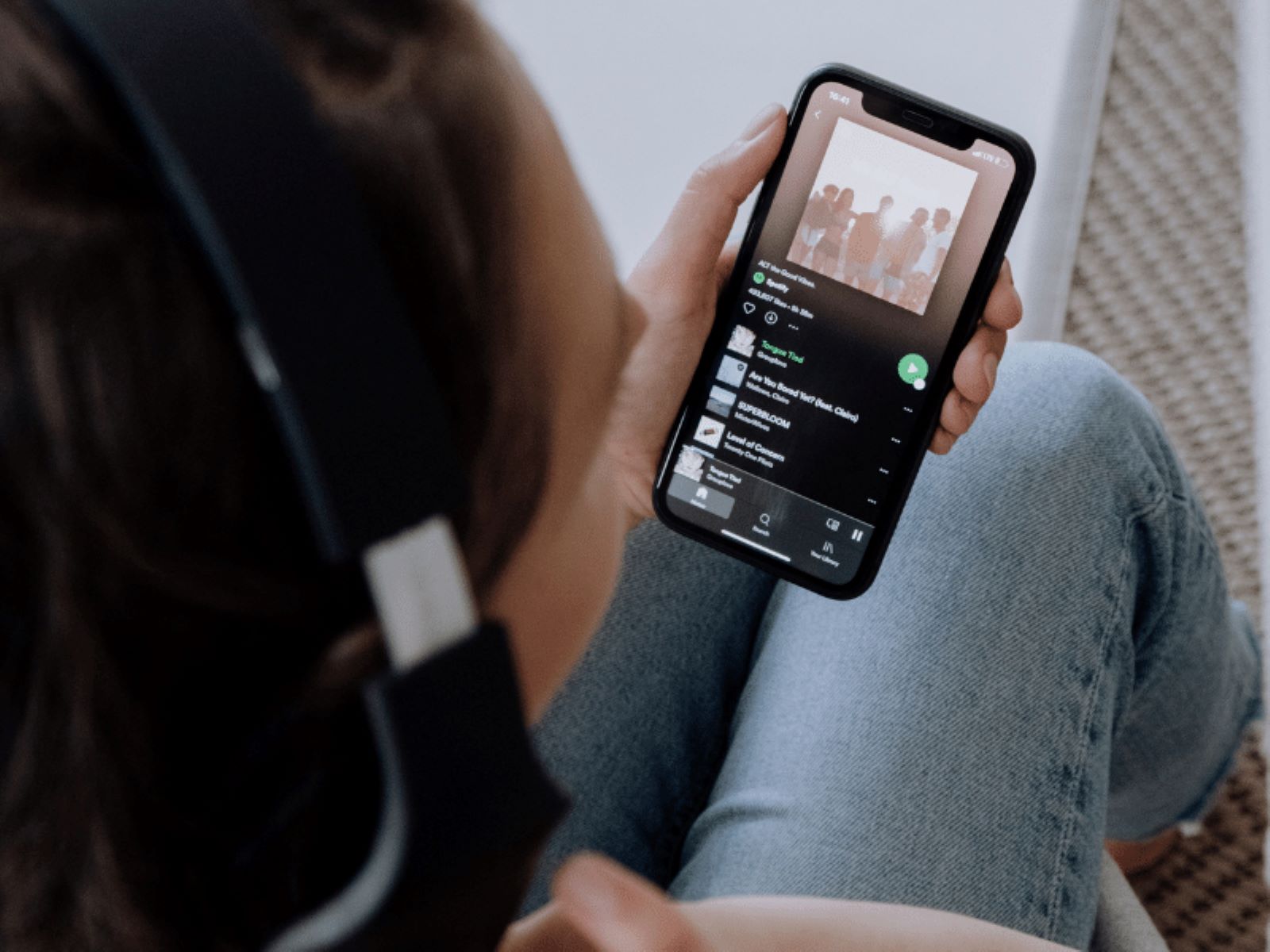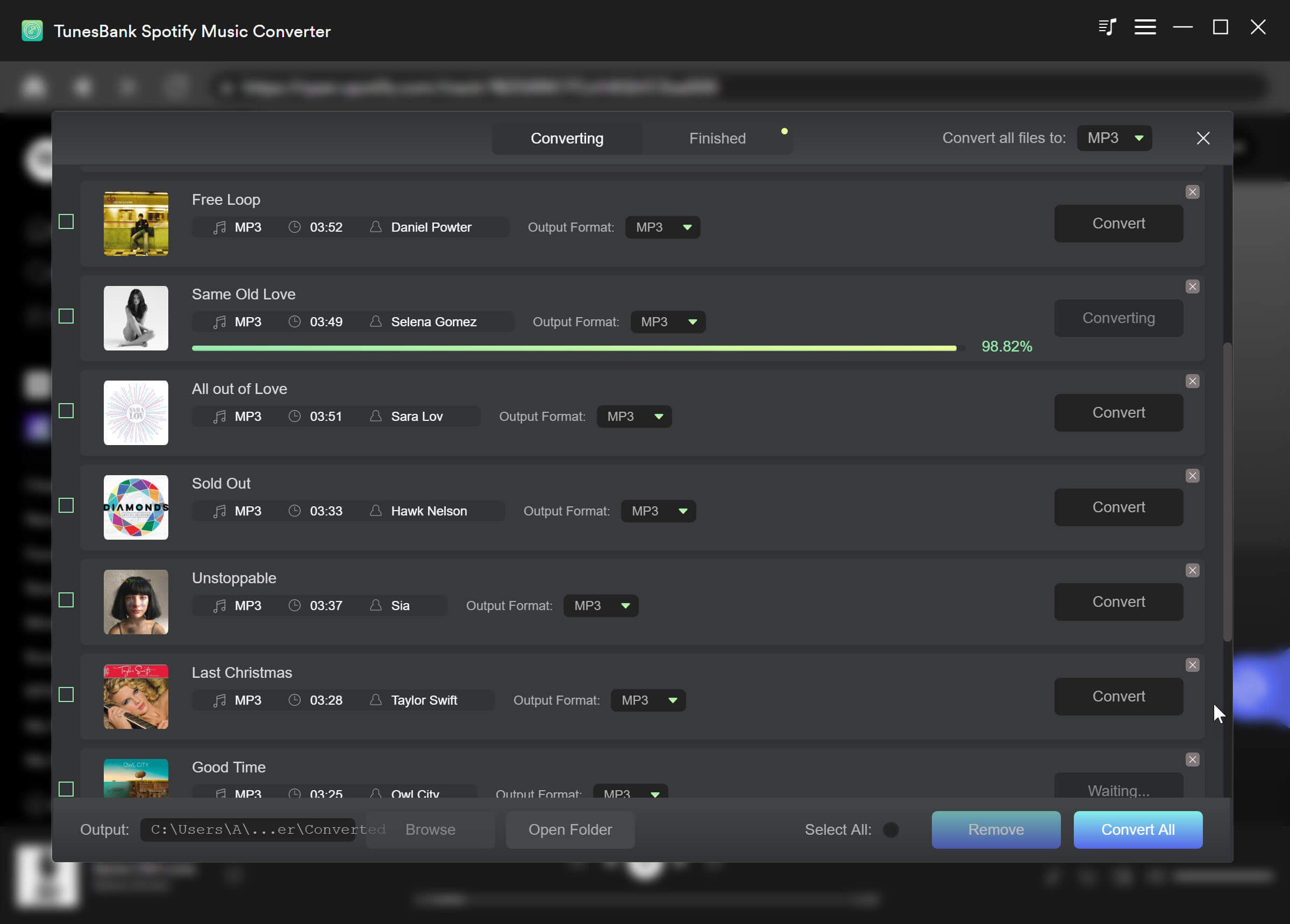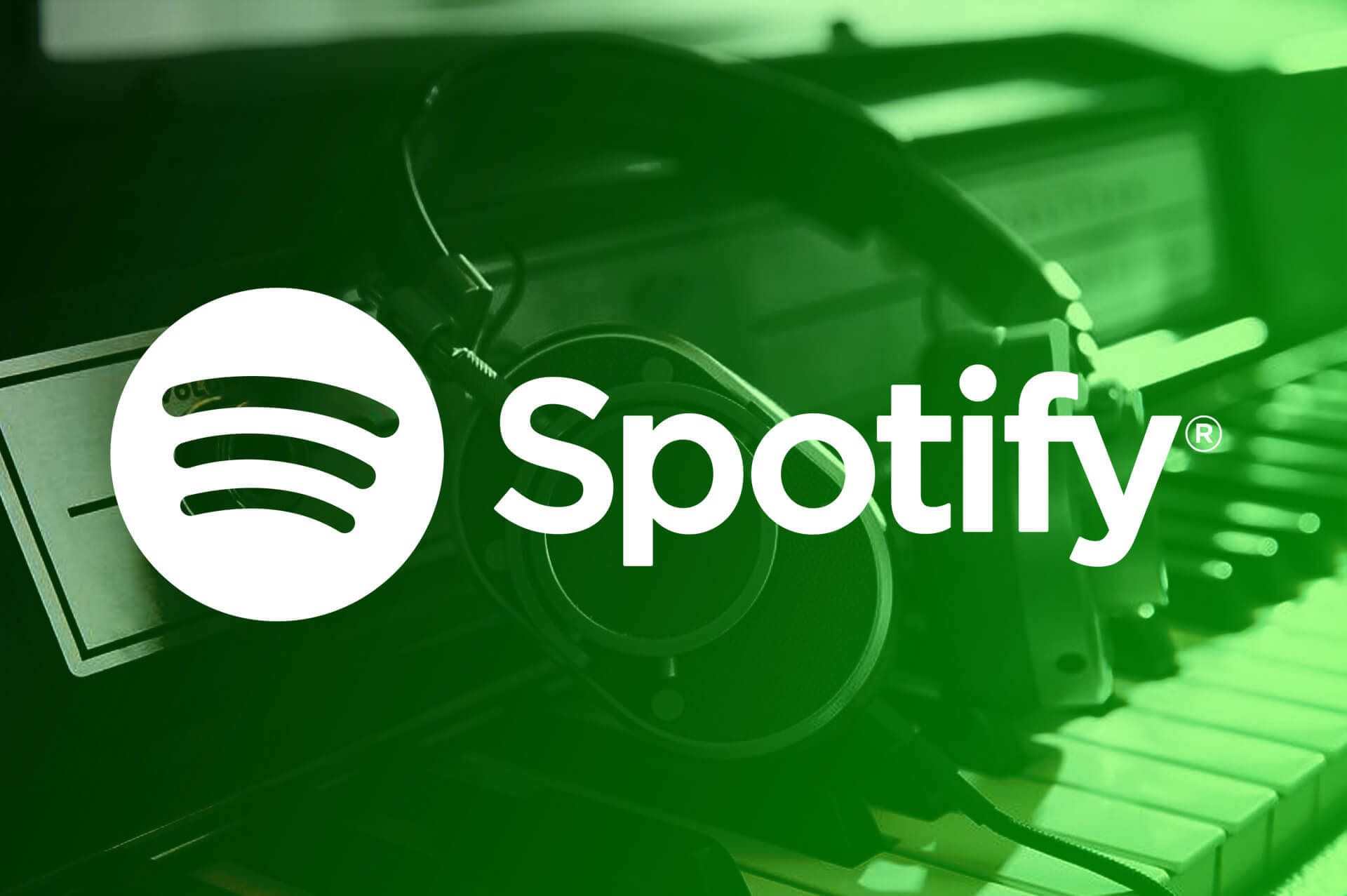Introduction
The music industry has evolved significantly in recent years, with digital platforms becoming the go-to for both artists and listeners. Among these platforms, Spotify has emerged as a dominant force, providing a vast library of music to millions of users worldwide. If you’re a musician looking to get your music heard by a wider audience, getting it on Spotify is crucial.
With over 320 million active users and a massive collection of songs, Spotify offers tremendous opportunities for exposure and success. However, getting your music on Spotify requires some effort and strategic planning. In this article, we will guide you through the process of getting your music on Spotify and maximizing your chances of reaching a larger audience.
In the following sections, we will cover various methods and strategies that you can utilize to get your music on Spotify. Whether you are an independent artist or signed to a record label, these techniques are applicable to all. From submitting your music to Spotify to optimizing your tracks for playlist placement, we will provide you with valuable insights to help you navigate the journey.
It is worth noting that getting your music on Spotify is not a guarantee of instant success. The music industry is highly competitive, and it requires persistence, determination, and a consistent marketing effort to stand out from the crowd. By following the tips and techniques outlined in this article, you will enhance your chances of gaining recognition and growing your fanbase on Spotify.
So let’s dive in and explore the various strategies to get your music on Spotify and make the most out of this influential platform. Whether you are a budding musician or an established artist looking to expand your reach, this guide will equip you with the necessary tools to succeed in the digital music landscape.
Submit Your Music to Spotify
Submitting your music directly to Spotify is the first and most crucial step in getting your tracks on the platform. Spotify offers two methods for submitting your music: through a digital distributor or through Spotify for Artists.
1. Digital Distributor: Signing up with a digital distributor is the most common and recommended way to get your music on Spotify. Digital distributors are third-party platforms that specialize in distributing music to various streaming services, including Spotify. Some popular digital distributors include TuneCore, DistroKid, and CD Baby. These platforms handle the technical aspects of delivering your music to Spotify, ensuring that it meets the required standards and specifications. Additionally, they often provide valuable services like royalty collection and analytics to track your music’s performance.
2. Spotify for Artists: If you already have music on Spotify and want to take more control over your artist profile, you can sign up for Spotify for Artists. This platform enables artists to manage their profile, access performance analytics, and submit unreleased music for consideration on official Spotify playlists. Having a verified Spotify for Artists account also allows you to customize your artist profile, engage with your fans through the Spotify for Artists app, and gain access to promotional tools.
When submitting your music to Spotify, it’s important to ensure that your tracks meet Spotify’s quality guidelines. This includes having high-quality audio files, correct metadata (song title, artist name, album title, etc.), and compliant album artwork. Be sure to follow the guidelines provided by your chosen digital distributor or Spotify for Artists to ensure a smooth submission process.
It’s worth noting that submission through a digital distributor typically incurs a small fee or a commission on sales and streams. However, the convenience and additional services they offer often make it a worthwhile investment. On the other hand, using Spotify for Artists is free, but it requires more hands-on management of your profile and submissions.
Once your music is submitted, it goes through Spotify’s ingestion process, which includes reviewing the content for copyright compliance and ensuring it meets the quality standards. This process can take several days to weeks, so it’s important to plan ahead and allow for sufficient time before any release or promotional campaigns.
By submitting your music to Spotify, you are opening up opportunities for your music to be discovered, streamed, and added to playlists. It’s an essential step to gain visibility and traction on the platform. However, getting your music on Spotify is just the beginning. In the following sections, we will explore additional strategies to promote your music and maximize its reach on Spotify.
Distribute Your Music through a Digital Distributor
Once you have your music ready for release, distributing it through a digital distributor is an effective way to get your tracks on various streaming platforms, including Spotify. A digital distributor acts as the middleman between you and the streaming services, handling the distribution process and ensuring that your music reaches a wide audience.
Here are the key steps to distribute your music through a digital distributor:
1. Choose a Digital Distributor: There are several reputable digital distribution platforms available, such as TuneCore, DistroKid, CD Baby, and many more. Research each platform to see which one aligns best with your needs. Consider factors such as pricing, services offered, royalty collection, and user experience.
2. Create an Account: Sign up for an account with your chosen digital distributor. You will be required to provide information about yourself, your music, and your payment details. Some platforms may require you to pay a fee or commission based on your distribution plan.
3. Upload Your Music: Once your account is set up, you will be able to upload your music files. Make sure to follow the platform’s guidelines regarding file formats, audio quality, and metadata. Double-check that your tracks have the correct song titles, artist names, album information, and genre tags. This ensures that your music is discoverable and appears correctly on Spotify and other streaming platforms.
4. Select Distribution Options: Digital distribution platforms often offer additional services like worldwide distribution, pre-order campaigns, promotional tools, and music monetization. Explore these options and select the ones that align with your marketing and promotional goals. However, keep in mind that some services may incur extra fees.
5. Set a Release Date: Choose a release date for your music. This allows you to plan your promotional efforts and build anticipation around your release. Some distributors offer the option to set up pre-save campaigns, where fans can save your music in advance, ensuring that it appears in their library on the release day.
6. Review and Submit: Before submitting your music for distribution, carefully review all the details. Check for any errors or missing information. Once you are satisfied, submit your music for distribution. The digital distributor will then handle the process of delivering your music to various streaming platforms, including Spotify.
7. Track Your Performance: Once your music is live on Spotify, you can track its performance using the analytics provided by your digital distributor or through Spotify for Artists. Monitor metrics like streams, listener demographics, playlist placements, and follower growth. This data will help you gauge the effectiveness of your promotional efforts and make informed decisions for future releases.
Distributing your music through a digital distributor simplifies the process of getting your music on Spotify. It saves you time and effort by handling the technical aspects of distribution and ensuring that your music reaches a wide audience. Additionally, many digital distributors offer additional services like marketing tools and royalty collection, which can be beneficial for independent artists looking to establish a presence in the music industry.
Next, we will explore another avenue to get your music on Spotify: signing with a record label or aggregator.
Sign with a Record Label or Aggregator
Signing with a record label or aggregator is another avenue to get your music on Spotify and gain access to additional resources and promotion. While independent artists often opt for digital distributors, signing with a record label can provide valuable support in terms of marketing, distribution, and industry connections.
1. Record Label: A record label is a company that specializes in discovering, signing, and promoting artists. Labels have established relationships with streaming platforms like Spotify and can help get your music featured on curated playlists and gain exposure to a wider audience. They often have dedicated marketing teams and resources to promote your music and plan effective release strategies. However, it’s important to carefully research and consider the terms and conditions of any record label contract before signing, as it can be a long-term commitment that affects your artistic freedom and future earnings.
2. Aggregator: An aggregator can be thought of as a digital distributor with additional promotional services. Aggregators work with multiple record labels and artists, acting as intermediaries between them and streaming platforms. They offer a range of services, including distribution, marketing, synchronizing music for TV shows and films, and securing playlist placements. Aggregators often have extensive contacts and relationships with Spotify’s editorial team, increasing the likelihood of playlist features and promotional opportunities.
When considering signing with a record label or aggregator, it’s important to weigh the benefits against any potential drawbacks. While they can provide valuable support and resources, signing with a label or aggregator often involves giving up a percentage of your royalties or entering into a contractual agreement. Ensure that the terms align with your goals and career aspirations.
Signing with a record label or aggregator can significantly boost your music’s exposure and allow you to focus more on the creative aspects of your career. They can offer professional guidance, help secure collaborations with established artists, and provide the necessary financial backing for recording, marketing, and touring.
However, it’s essential to thoroughly research and vet potential partners before signing any agreements. Consider factors such as their reputation, track record, artist roster, and the terms and conditions of the deal. Seek legal advice if necessary to ensure that you fully understand the contractual obligations and implications.
Having representation by a reputable record label or aggregator can provide an extra layer of credibility and support when promoting your music on Spotify. It can open doors to opportunities that may not be easily accessible as an independent artist.
Next, we will discuss the power of social media in promoting your music on Spotify.
Promote Your Music on Social Media
Social media platforms have revolutionized the music industry, providing artists with a direct and powerful tool for self-promotion and connecting with fans. Leveraging social media platforms like Instagram, Facebook, Twitter, and TikTok can significantly boost your music’s visibility and attract new listeners on Spotify.
1. Build an Online Presence: Create dedicated social media profiles for your music and establish a consistent brand identity. Use striking visuals, engaging content, and a unique voice to captivate your audience and make a lasting impression. Post updates about your music, behind-the-scenes footage, upcoming shows, and collaborations to keep your followers engaged and excited about your music.
2. Engage with Your Audience: Interact with your fans on social media by responding to comments, messages, and mentions. Show genuine appreciation for their support and make them feel like an active part of your journey. Encourage user-generated content and fan-generated playlists featuring your music. Engaging with your audience fosters a strong community and can lead to increased loyalty and word-of-mouth promotion.
3. Share Teasers and Sneak Peeks: Create anticipation for your music releases by sharing teasers, snippets, and sneak peeks on social media. Build excitement around your upcoming tracks to generate buzz and encourage followers to stream your music on platforms like Spotify. Use visually appealing and attention-grabbing content to stand out in crowded social media feeds.
4. Collaborate with Influencers: Partnering with influencers or popular social media personalities can greatly amplify your music’s exposure on platforms like Instagram or TikTok. Find influencers whose audience matches your target demographic and collaborate on creative content featuring your music. Influencers can introduce your music to their followers, resulting in increased visibility and potential new listeners on Spotify.
5. Run Contests and Giveaways: Organize social media contests and giveaways as a way to reward your fans and attract new followers. Encourage people to share your music, follow your social media profiles, or create user-generated content for a chance to win exclusive merchandise, concert tickets, or even a private listening session. Contests and giveaways can generate excitement, encourage engagement, and help spread your music to a wider audience.
6. Cross-Promote with Other Artists: Collaborating and cross-promoting with other artists can expand your reach and introduce your music to their fanbase. Engage in mutual shoutouts, share playlists, or even collaborate on a joint release. Utilize the power of networking and leverage partnerships to create a ripple effect that increases exposure for your music across social media platforms and on Spotify.
Remember to tailor your social media strategies to match the platform you are using. Each platform has its unique features and audience demographics, so understanding how to effectively engage on each one will maximize your promotional efforts.
Social media offers an incredible opportunity to connect directly with your fans, grow your online presence, and drive more streams of your music on Spotify. By implementing creative and consistent social media strategies, you can build a strong online presence and cultivate a loyal following that will support and stream your music on Spotify.
Next, let’s discuss the benefits of collaborating with other artists to expand your reach on Spotify.
Collaborate with Other Artists
Collaborating with other artists is a powerful way to expand your reach on Spotify and tap into new audiences. By joining forces with like-minded musicians, you can create unique tracks, cross-promote each other’s music, and leverage each other’s fanbase to gain more visibility on the platform.
1. Choose the Right Collaborators: Look for artists whose musical style and audience align with your own. Seek out artists who have a similar genre or sound, but also consider collaborating with artists in complementary genres to reach new listeners. Collaborating with well-established artists can also help introduce your music to a larger audience and provide valuable industry connections.
2. Collaborate on New Tracks: Collaborative tracks have the potential to garner more attention and interest from listeners on Spotify. Work together with other artists to create original songs that showcase the best of both your musical talents. By merging your unique styles and creative approaches, you can create a fresh and engaging sound that stands out in a crowded music landscape.
3. Feature on Each Other’s Tracks: One effective way to collaborate is by featuring on each other’s tracks. This allows you to tap into each other’s fanbase and promote the collaboration to a wider audience. Choose songs that complement your respective styles and highlight each artist’s strengths. By cross-promoting the featured tracks across both artists’ social media platforms and music channels, you can drive more streams and engagement.
4. Create Collaborative Playlists: Collaborative playlists are a great way to showcase your music and forge connections with other artists. Curate a playlist with tracks from both your own catalog and other artists you admire. This not only exposes your music to new listeners who follow the playlist but also shows your support for other artists. They may reciprocate by adding your music to their playlists, expanding your reach further.
5. Perform Collaborative Shows and Events: Partnering with other artists to perform live shows or virtual events is a powerful way to engage with your audience and gain exposure on Spotify. Joint concerts or live stream sessions featuring multiple artists can attract a larger audience and create a memorable experience for fans. Collaborative events provide opportunities for cross-promotion and can lead to increased streams and followers on Spotify.
6. Leverage Social Media Collaborations: Promote your collaborations on social media platforms to maximize their impact. Share behind-the-scenes footage, studio sessions, or teaser clips to generate excitement. Encourage fans to engage by using hashtags related to the collaboration or by participating in challenges or contests tied to the release. Social media buzz around your collaboration can help drive streams and increase visibility on Spotify.
Collaborating with other artists allows you to tap into their fanbase and gain exposure to new listeners. It fosters a sense of camaraderie within the music community and helps build valuable connections that can lead to future opportunities. By combining your talents and resources, you can create a powerful impact on Spotify and expand your reach as an artist.
Next, we will discuss the importance of creating a Spotify Artist Profile to enhance your online presence.
Create a Spotify Artist Profile
A Spotify Artist Profile is a valuable tool for any musician looking to establish a strong online presence and connect with fans on Spotify. It allows you to showcase your music, share your story, and engage with listeners. Here’s how to create an effective Spotify Artist Profile:
1. Claim Your Profile: If you haven’t already, claim your Spotify Artist Profile through Spotify for Artists. This gives you access to various features and customization options. To claim your profile, verify your identity as an artist and link it to your music on Spotify.
2. Choose a Compelling Profile Image and Header: Your profile image and header should visually represent your brand and music. Use high-quality, eye-catching images that resonate with your target audience. Consider incorporating your logo or a memorable photo of yourself as the profile picture. The header can be used to highlight album or single artwork, upcoming shows, or any other relevant promotion.
3. Write an Engaging Biography: Craft a captivating artist biography that tells your story and highlights your musical journey. Focus on what sets you apart and what inspires your music. Use compelling language, share personal anecdotes, and include any notable achievements or collaborations. Keep it concise but make sure it provides insights into your unique identity as an artist.
4. Curate Playlists: Showcase your musical tastes and influences by curating playlists on your artist profile. Create playlists that reflect your style, mood, or upcoming releases. Include tracks from other artists, but don’t forget to include your own music as well. Curating playlists can introduce your audience to new music and show your support for other artists.
5. Promote Releases and Merchandise: Take advantage of the “Artist’s Pick” feature on your profile to promote your latest releases or merchandise. Use this space to highlight specific songs, albums, or even exclusive content. Regularly update the “Artist’s Pick” section to keep it fresh and relevant.
6. Engage with Fans through the Community Feed: Utilize the Spotify for Artists’ Community Feed to engage directly with your fans. Respond to comments, share updates, and express gratitude for their support. This kind of interaction creates a sense of connection and loyalty, making listeners feel appreciated and valued.
7. Monitor Your Insights: Take advantage of the analytics provided by Spotify for Artists to gain valuable insights into your audience and music performance. Track metrics such as monthly listeners, streams, and follower growth. Use this data to understand which tracks or campaigns resonate the most with your audience and fine-tune your strategies accordingly.
8. Promote Your Spotify Artist Profile: Promote your Spotify Artist Profile across your social media channels, website, and other online platforms. Encourage your fans to follow you on Spotify and provide direct links to your profile. Include Spotify follow buttons on your website and social media profiles to make it easy for your audience to stay updated with your latest releases.
A well-crafted Spotify Artist Profile not only helps you connect with your existing fanbase but also attracts new listeners. It serves as your online music hub, allowing fans to explore your discography, discover new releases, and engage directly with your music. By investing time and effort into creating and maintaining a compelling Spotify Artist Profile, you can elevate your online presence and maximize your visibility on the platform.
Next, we will delve into the importance of uploading high-quality audio files to ensure the best listening experience for your audience.
Upload High-Quality Audio Files
When it comes to uploading your music to Spotify, the quality of your audio files plays a crucial role in providing the best listening experience for your audience. High-quality audio enhances the overall sound and ensures that your music is properly represented on the platform. Here are some important considerations for uploading high-quality audio files to Spotify:
1. Use Lossless or High-Quality Audio Formats: Opt for lossless or high-quality audio formats like FLAC or WAV to preserve the original audio quality. These formats retain more audio information compared to compressed formats like MP3 or AAC, resulting in superior sound reproduction. Using high-quality formats ensures that your tracks sound their best and are not compromised during the streaming process.
2. Mind the Bitrate and Sample Rate: Set an appropriate bitrate and sample rate when exporting or mastering your tracks. Higher bitrates, such as 320 kbps, are recommended for better audio quality. The sample rate should typically be set to 44.1 kHz, which is the standard for audio CDs. However, ensure that your chosen digital distributor or aggregator supports the selected bitrate and sample rate to avoid any compatibility issues.
3. Consider Mastering for Streaming: Mastering your tracks specifically for streaming platforms like Spotify can optimize the audio quality. Streaming services use various algorithms to compress audio files and maintain consistency across different tracks. It’s advisable to consult with a professional mastering engineer who is experienced in preparing audio for streaming platforms. They can ensure that your tracks sound balanced, punchy, and translate well across various playback devices.
4. Check for Distortion and Clipping: Ensure that your audio files are free from distortion and clipping. These issues can occur during the recording, mixing, or mastering process and negatively impact the audio quality. Before uploading, carefully listen to your tracks and use appropriate tools or plugins to ensure the audio is clean and free from any unwanted artifacts. Audition your tracks on different playback systems to ensure the best possible listening experience.
5. Double-Check Metadata and Cover Art: In addition to the audio quality, pay attention to the metadata and cover art associated with your tracks on Spotify. Ensure that all relevant information, such as song titles, artist names, album titles, and genre tags, are accurate and properly filled out. Additionally, create high-quality and visually appealing cover art that represents your music and captures the attention of potential listeners.
Uploading high-quality audio files to Spotify not only enhances the listening experience for your audience but also reflects your professionalism as an artist. By providing your fans with pristine audio, you create a positive impression and increase the chances of attracting new listeners. Remember that the quality of your music is a key determinant of its success on Spotify and other streaming platforms.
Next, we will explore strategies to optimize your music for placement on Spotify playlists.
Optimize Your Music for Spotify Playlists
Getting your music featured on Spotify playlists can significantly boost your visibility and attract new listeners. With millions of playlists created by both Spotify’s editorial team and user-generated content, optimizing your tracks for playlist placement can greatly enhance your chances of reaching a wider audience. Here are some strategies to optimize your music for Spotify playlists:
1. Understand Playlist Curator Preferences: Research the types of playlists that are relevant to your music genre and style. Listen to popular playlists featuring similar artists and analyze the characteristics of the tracks included. Consider tempo, mood, energy, and production styles. By understanding what playlist curators are looking for, you can tailor your music to better fit their preferences.
2. Create Catchy Hooks and Memorable Intros: The first few seconds of your track are crucial in capturing listeners’ attention. Craft memorable hooks and intros that immediately captivate the audience. A strong, catchy hook can make your track stand out and increase the likelihood of it being selected for playlists.
3. Focus on Production Quality: Ensure that your music is professionally produced and mixed. Spotify’s playlist curators prioritize well-produced tracks that sound polished and well-balanced. Invest in high-quality recording equipment and work with experienced producers or engineers to create tracks that showcase your talent and resonate with listeners.
4. Engage with Playlist Curators: Actively engage with playlist curators by reaching out to them on social media or through designated submission platforms. Introduce yourself and your music, and politely express your interest in being featured on their playlists. Personalized and targeted interactions increase the chances of your music being considered for playlist placement.
5. Encourage User-Generated Playlists: Encourage your fans to create and share their own playlists featuring your music. User-generated playlists not only increase your streams but can also catch the attention of Spotify’s algorithm, potentially leading to inclusion on official playlists. Engage with fans who create playlists and show appreciation for their support.
6. Promote Your Tracks through Influencers: Collaborate with influencers or music bloggers who have dedicated playlists on Spotify. Sharing your track with influential individuals can lead to playlist features and increased exposure. Seek out influencers with followers who align with your target audience and explore opportunities for collaboration or playlist features.
7. Consistently Release New Music: Regularly releasing new music keeps your profile active and increases your chances of appearing on Spotify’s radar. Consistency in releasing high-quality tracks demonstrates your dedication as an artist and helps build anticipation among fans and playlist curators.
8. Utilize Spotify for Artists Tools: Take advantage of the features provided by Spotify for Artists, such as submitting unreleased tracks for playlist consideration and utilizing the Release Radar algorithm. By submitting your music in advance and utilizing these features, you increase your chances of being considered for official playlist placements.
Remember, optimizing your music for playlist placement doesn’t guarantee immediate success, as competition is fierce. However, by implementing these strategies and consistently delivering high-quality music, you increase the likelihood of attracting the attention of playlist curators and gaining placement on playlists that can significantly boost your visibility and exposure on Spotify.
Next, let’s explore the importance of engaging with your fans on Spotify to cultivate a loyal and supportive following.
Engage with Your Fans on Spotify
Engaging with your fans on Spotify is essential for cultivating a loyal and supportive following. By actively connecting with your listeners, you can foster a sense of community, increase fan loyalty, and ultimately drive more streams and engagement. Here are some strategies to effectively engage with your fans on Spotify:
1. Respond to Comments and Messages: Take the time to respond to comments and messages from fans on your Spotify tracks and artist profile. Acknowledge their support, answer their questions, and show genuine appreciation for their feedback. This personal interaction makes fans feel valued and connected to you as an artist.
2. Create Exclusive Content: Reward your most dedicated fans by offering exclusive content on Spotify. This can include acoustic versions of your songs, behind-the-scenes footage from recording sessions or live performances, or early access to new releases. Providing exclusive content generates excitement, incentivizes fans to engage with your music, and gives them a sense of being part of an exclusive community.
3. Share Personal Stories and Updates: Share personal stories, insights, and updates with your fans through the “Artist’s Pick” feature on Spotify. Use this opportunity to provide behind-the-scenes glimpses into your creative process, your inspirations, and news about upcoming projects. Sharing personal stories creates a connection and makes fans feel more connected to you as an artist.
4. Host Listening Parties and Live Q&A Sessions: Use Spotify’s integration with social media platforms to host listening parties or live Q&A sessions with your fans. Share a playlist of your favorite tracks and encourage fans to listen and share their thoughts. Engage in live chats or Q&A sessions to directly interact with your audience and address their questions or comments. These interactive sessions strengthen the bond between you and your fans.
5. Encourage User-Generated Content: Encourage your fans to create user-generated content related to your music. This can include covers, dance videos, fan art, or even fan-made playlists featuring your tracks. Share and showcase their creations on your social media channels or in your “Artist’s Pick” section. Recognizing and promoting user-generated content shows appreciation for your fans’ creativity and dedication.
6. Promote Fan-Curated Playlists: Recognize and feature playlists curated by your fans on your Spotify profile. This not only shows appreciation for their support but also encourages other fans to engage with your music. Encourage fans to share their playlists and tag you for a chance to be featured. This approach fosters a sense of community and encourages fans to engage with your music in a more meaningful way.
7. Collaborate with Fans: Consider collaborating with your fans on unique projects or initiatives. This can include remix contests, featuring fan artwork as your cover art, or even inviting fans to participate in a special recording or live performance. By involving your fans in your creative process, you create a deeper connection and make them feel like valued contributors to your music.
Engaging with your fans on Spotify is an ongoing process that requires genuine dedication and effort. By taking the time to respond to comments, share exclusive content, and foster a sense of community, you can build a loyal fanbase that passionately supports your music. Remember, the more you engage with your fans, the more they will feel connected to you as an artist, resulting in increased streams, engagement, and a thriving music career.
Next, we will discuss the importance of monitoring your music’s performance on Spotify and using analytics to make informed decisions.
Monitor Your Music’s Performance on Spotify
Monitoring your music’s performance on Spotify is crucial for understanding how it is resonating with your audience and making informed decisions to optimize your success on the platform. By utilizing the analytics and insights provided by Spotify for Artists, you can unlock valuable information about your listeners, track performance, and engagement. Here’s why monitoring your music’s performance is important:
1. Track Stream Counts and Monthly Listeners: Spotify for Artists provides you with real-time data on your stream counts and the number of monthly listeners. Monitoring these metrics helps you gauge the popularity of your tracks and understand which songs are resonating the most with your audience. By identifying your most streamed songs, you can tailor your promotional efforts and focus on the tracks that are performing well.
2. Identify Listener Demographics: Spotify’s analytics allow you to gain insights into your audience’s demographics, including age, gender, and location. This data helps you understand your target audience better and tailor your marketing strategies accordingly. It enables you to create content and initiatives that resonate with your listeners, increasing the chances of engagement and growth.
3. Discover Playlist Placements: Monitoring your music’s performance allows you to identify if your tracks are being added to Spotify’s official playlists or user-generated playlists. This information helps you evaluate the success of your promotional efforts and identify areas for improvement. Being featured on playlists can exponentially increase your streams and introduce your music to new listeners.
4. Gain Insights into Listener Behavior: Spotify’s analytics provide data on how listeners are discovering and engaging with your music. You can track the source of your streams, whether through algorithmic playlists, user-generated playlists, or direct searches. This knowledge helps you identify which channels and strategies are driving the most engagement and allows you to refine your promotional approach accordingly.
5. Evaluate the Impact of Marketing Campaigns: If you have implemented specific marketing campaigns or promotions for your music, monitoring their impact on Spotify can help you assess their effectiveness. By correlating the timing of campaigns with changes in stream counts or follower growth, you can draw connections between your marketing efforts and audience response. This data assists in refining future campaigns and optimizing your promotional strategies.
6. Inform Future Decision-Making: Utilizing the insights from Spotify’s analytics empowers you to make data-driven decisions for your music career. By having a clearer understanding of your audience, their preferences, and how your tracks are performing, you can make informed choices regarding song selection, marketing tactics, and even potential collaborations. This knowledge enables you to adapt, refine, and evolve your strategy over time.
Consistently monitoring your music’s performance on Spotify provides you with a comprehensive understanding of how your tracks are resonating with your audience. It allows you to identify trends, evaluate the success of your promotional activities, and make informed decisions to optimize your music career. Embrace the analytics provided by Spotify for Artists to unlock valuable insights that propel your music forward.
In the final section, we will conclude our discussion by summarizing the key points and the importance of implementing a well-rounded approach to succeed on Spotify.







